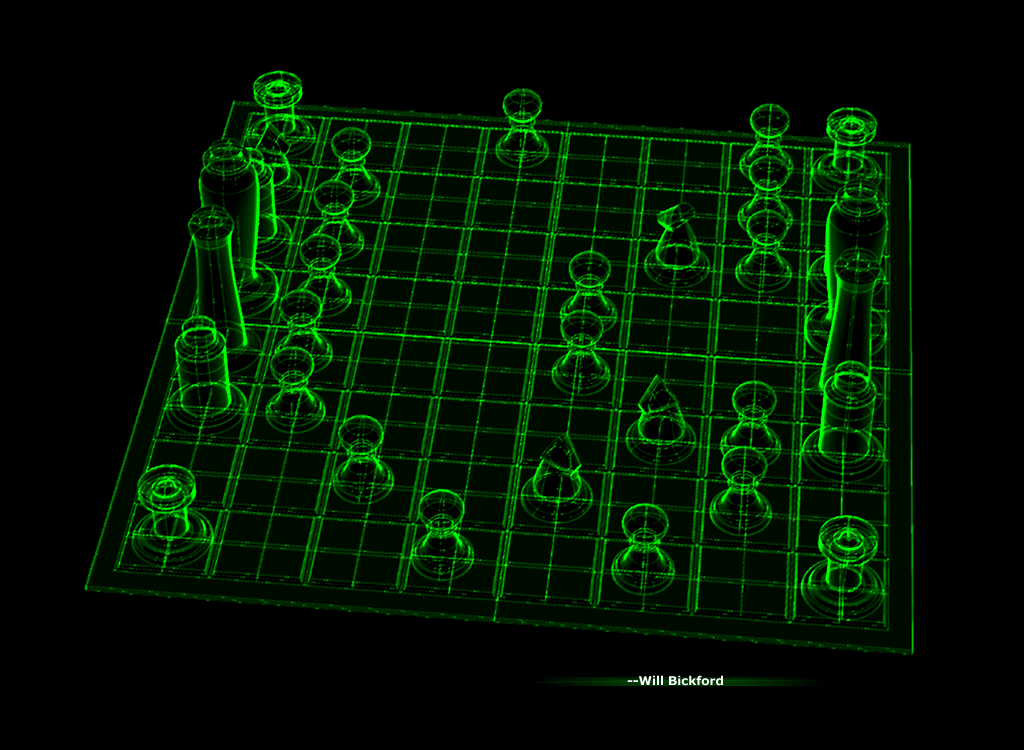
Hack Your Opponent's Position
Hack your opponent's position. Most games, it'll be the easiest hack you will ever do. All of the codes are right in front of you. In a game of chess, nothing is hidden. There is minimal uncertainty. All the cards (or pieces) are on the table. By gaining an intimate understanding of the mechanics of your opponent's position, by paying close attention to the capabilities of your opponent's pieces -- as if they were your own -- full control of the game, of your opponent's system, is granted.
Your attacking opportunities are only made possible by the defecits in your opponent's position. And your defenses will become airtight only by fully understanding your opponent's strengths, which allows you to anticipate all possible threats. Once you know where the enemy strengths are, you can work to undermine them and, if you are not able to turn them into weaknesses (which you will fully exploit), you can at least more effectively manage them -- before you enable your opponent to hack your own position.
You cannot stop enemy threats that you are unaware of. But what is a threat? It is danger based on the capabilities, or the potential energy, of the enemy army. This information has all been gathered for you. No decoding or guesswork is necessary. Chess is a game of transparency. The emperor wears no clothes. Take advantage of that.
In intelligence gathering efforts (like determining whether a state and/or terrorist group is enriching uranium, to what extent, and what their intentions are), generally only limited, fragmented, and often unreliable bits of information are available to info-overloaded analysts. These analysts must piece those fragmented bits together and make the best decision they can based on that limited information. But again, nothing is hidden in chess. In this way, chess resembles warfare, but a war in which both sides hack each other relentlessly. Wait, that sounds a lot like modern (cyber)warfare! The ability to hack your opponent's position -- to fully understand its weaknesses and strengths, all its nuances, to anticipate enemy threats -- is unparalleled in chess compared with most other games (such as poker, where, even if you're a stats whiz, you cannot be entirely sure what cards your opponents hold). No prisoner's dilemma here. Therefore, use the time allotted to you (and ideally, the time allotted to your opponent -- so that you can hack their clock, too) to fully and deeply comprehend all the intricacies of their position. Know the capabilities of their pieces as if they were your own; see the board as an integrated, interdependent whole. Hack their position by recognizing the strongest parts of their design, not allowing those parts to be employed against you, effectively innoculating yourself from viral infection (or as some in chess, such as Karpov, would say, an ample dosage of prophylaxis). Then deftly exploit their weaknesses.
This is all a very rough, general sketch but perhaps it offers a useful screen through which to view chess so that we may come to realize that, yes, chess understanding is within our grasp, and yes, avoiding blunders and enemy counterplay is within our grasp. Simply take the time and effort to do so. Both hackers in chess have full access to their opponent's position, but for various reasons, many chess players spend most of their time hacking their own position (navel gazing, which is only half the battle) and forgetting to delve deep into the intricacies of the enemy structure. This will surely expose oneself to vulnerabilities.
As usual, it was a discussion with my student Jorge today (about avoiding blunders and enemy counterplay) that led to this thought. I hope to delve into it more in the future. I imagine many parallels are being drawn in this field given the rapidly changing nature of warfare.
Image courtesy of Will Bickford.
